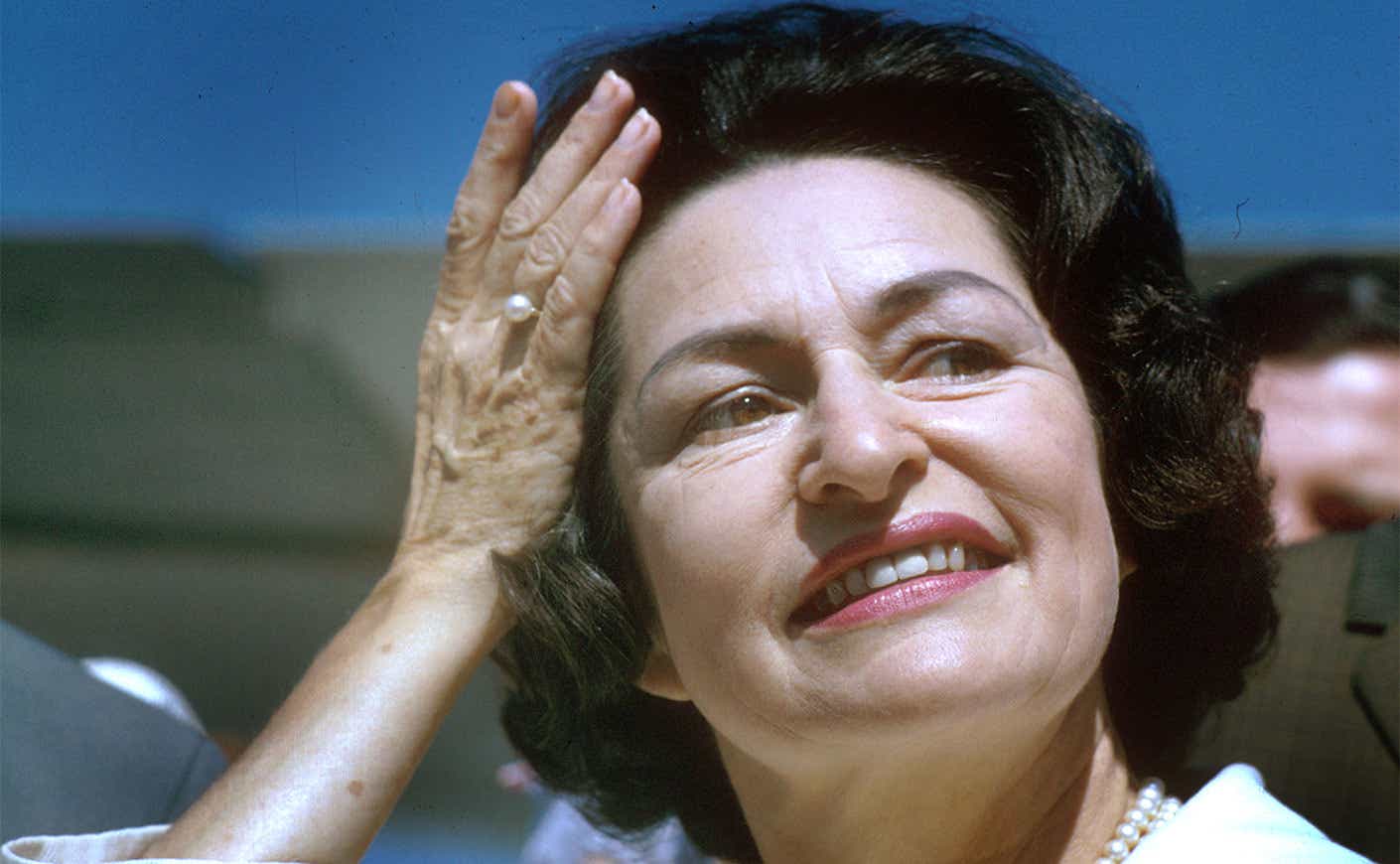Lady Bird Johnson is often remembered as a polite Southerner and the dutiful wife of President Lyndon B. Johnson. She was known for championing Johnson’s civil rights, environmental and anti-poverty policies, while also promoting her own cause of beautifying America.
But Julia Sweig’s new book Lady Bird Johnson: Hiding in Plain Sight — and companion podcast In Plain Sight — explore the former first lady’s profound yet underappreciated impact on LBJ’s presidency and political career. Both draw upon more than 123 hours of Lady Bird’s largely unheard White House audio diaries.
As the tapes reveal, it was Lady Bird whom Johnson routinely turned to for advice and consolation during his time in office. Sweig found that Lady Bird was much more than just a confidant — she was her husband’s closest advisor and most trusted political partner. Lady Bird was a political surrogate on the campaign trail, in the White House and in meetings with business leaders as well as trade unionists. She also helped draft speeches and gave Johnson feedback.
“I’m hoping that by excavating her own material and retelling her story and the story of his presidency, people are starting to come out and acknowledge that what she was exercising was power,” Sweig, who is a senior research fellow at the LBJ School of Public Affairs at the University of Texas-Austin, told KCM. “It wasn’t just emotional ballast — it was policy influence.”
As first lady, she expanded the powers of the role in an administrative as well as in a legislative capacity. This included interacting directly with Congress, employing her own press secretary as well as policy staff, and making a solo electioneering tour. “Lady Bird to me is the contemporary bridge between Eleanor Roosevelt and Hillary Clinton,” Sweig said.
Most notably, Lady Bird led the charge on the Highway Beautification Act of 1965, which was informally known as “Lady Bird’s Bill.” The legislation was aimed at preserving the nation’s natural beauty by controlling the explosion of billboards along highways and roads. But her commitment to beautification was about much more than planting wildflowers along highways. For Lady Bird, it was about weaving together civil rights and what we know today as environmental justice, according to Sweig.
In fact, one of Lady Bird’s first environmental projects was partnering with philanthropists, environmental advocates and Black leaders in building desegregated parks and playgrounds. She also planted flowers and established open spaces throughout Washington, D.C for all of the city’s residents.
“Lady Bird’s association with what they were calling beautification is actually a very, very ambitious environmental vision,” Sweig said. “And she always hated the word beautification because it was this kind of feminizing euphemism.”
To understand Lady Bird, you also have to trace her early beginnings. Claudia Alta Taylor was born in 1912 in Karnack, Texas near the Louisiana border. She earned the nickname “Lady Bird” as a child and it stuck. Having lost her mother at a young age, she was primarily raised by her dad, aunt and nursemaids. She went on to graduate from the University of Texas at Austin in 1934 with a bachelor’s degree in arts and journalism before meeting Johnson, then a congressional aide, the same year.
Once described by her husband as “the brains and money” of the family, Lady Bird used her own inheritance to fund Johnson’s early campaigns. But Lady Bird’s influence extended beyond supporting her husband’s political ambitions. In 1943, she purchased KTBC, a small radio station in Austin. Though she bought the station while it was struggling and in debt, it wasn’t long before she turned it into a multimillion-dollar radio and television media empire.
Sweig said Lady Bird used her shrewd business and investment skills to manage the White House. She noted that the chief usher of the White House once wrote that she ran it like she was the CEO of a corporation. “She’s sort of well-known for keeping books and doing it to the penny,” Sweig said.
After leaving the White House in 1969, Lady Bird Johnson spent much of her remaining 38 years with her family, and after her husband died, devoted herself to continuing his legacy. She also supported causes dear to her, including the National Wildflower Research Center and The Lyndon Baines Johnson Library. She even received the Presidential Medal of Freedom in 1977, and the Congressional Gold Medal in 1988, the highest honors bestowed upon a U.S. civilian.
Despite these accomplishments and immense influence, Sweig said Lady Bird had to very careful about the way she managed her public image, which in turn created a duality. Sweig said much of this had to do with the fact that there weren’t — and still aren’t — many women in powerful positions in Washington.
“She saw herself as serving Lyndon Johnson and his presidency,” Sweig said. “She later called it ‘our presidency,’ but she, herself, I think, was careful to defer and deflect attention and give Lyndon the lead.”
Luckily, she had a true partnership with Johnson, who Sweig said wasn’t “shy about crediting her.”
“It was an emasculating thing to say out loud that the female partner of an American president was as powerful as she actually was,” she said. “I think we’re going to start seeing that change.”
Written and reported by Tess Bonn









